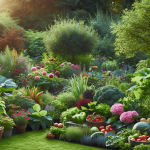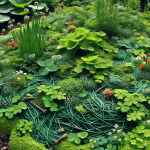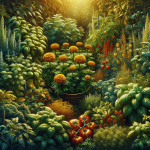This post may contain affiliate links. As an Amazon Associate, we may earn commissions from qualifying purchases.
Have you ever wondered if it’s possible to create a flourishing garden in an area that doesn’t get full sunlight all day? You may have a space in your yard that captures only fleeting glimpses of sunshine, slipping in and out like a fickle guest, leaving you baffled about what will actually grow there. Fear not. Crafting a vibrant, thriving garden in partial shade might sound tricky at first, but with the right knowledge and a splash of creativity, it can become a real gardener’s paradise.
Understanding Partial Shade
Before you begin, it’s pivotal to understand what partial shade truly means. Not all shady spots are created equal, and deciphering this can be quite the enlightening exercise. You see, partial shade receives direct sunlight for about three to six hours a day, typically during the less intense parts of the day, like early morning or late afternoon. It’s that patch of garden where the sun hides and seeks, resulting in an ever-changing tapestry of light and shadow. Knowing this, you can better select plants suited to this environment and employ gardening techniques that maximize their growing potential.
Types of Shade: The Spinning Wheel of Light
Breaking it down further, partial shade can manifest in a couple of ways. There’s “dappled shade,” where sunlight sneaks through branches, creating a whimsical patchwork of light; and “partial shade,” which means sunlight visits during specific times, offering your garden those occasional illuminating moments. Recognizing these nuances not only enhances your understanding but sets you up nicely to choose the right greens and blooms for your patch — no more distressed daisies and limp lavender!
Selecting the Right Plants: The Green Palette
Ah, the grand selection! It’s almost like matchmaking — connecting your garden’s unique lighting conditions with plants that will happily thrive in them. But how do you curate this verdant collection when the sun isn’t always on your side?
Shade-Loving Champions
Plants are remarkably adaptable, and many have evolved to flourish in shaded environments. Consider hostas, ferns, and astilbes as your new stalwart companions. These shade enthusiasts are not just survivors; they are the unassuming heroes of the garden world. With their lush leaves and delicate fronds, they bring charm and texture — quite akin to a well-composed symphony.
Table: Popular Shade-Loving Plants
| Plant | Features |
|---|---|
| Hostas | Varied foliage, low maintenance |
| Ferns | Feathery fronds, resilience |
| Astilbes | Plume-like flowers, adds color |
| Heucheras | Vibrant foliage, seasonal appeal |
| Lungwort | Spotted leaves, spring flowers |
Mix and Match
Once you’ve established a shortlist of shade-loving plants, you might want to get a little adventurous. Combining plants with different foliage colors, textures, and heights can create a layered, visually captivating garden. Imagine lush ferns nestled alongside the bold foliage of heucheras, with the soft pastel hues of astilbe blossoms punctuating the scene, like delicate brushstrokes on a canvas.
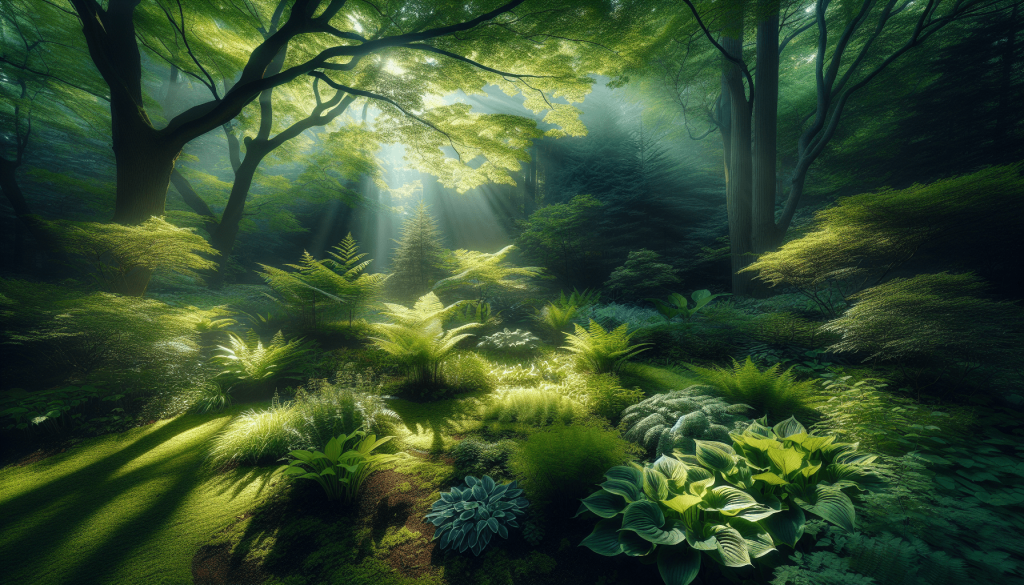
Soil and Drainage: The Foundation of Your Success
With your plants ready to grace the shade, it’s time to delve into the earth itself. Soil is the nourishing cradle for your garden, and good garden soil, like a sturdy foundation, is key to success. Partial shade gardens often reside beneath towering trees, where the soil can be a tad tricky — sometimes compacted, often battling with root competition and struggling with moisture issues.
Assessing Your Soil
To start, get to know your soil. Is it clayey, sandy, or somewhere in between? Testing its pH can also be enlightening; most plants prefer a neutral to slightly acidic environment. Ensure the soil is well-draining, as soggy roots are as unhappy as socks in a puddle. Improving the soil structure with organic matter, like compost or well-rotted manure, can work wonders, providing essential nutrients and improving drainage.
Watering Wisely: Wetting the Appetite
In partial shade, watering needs might differ compared to a full-sun garden. Too little water, and those roots sigh in despair. Too much, and you get a squelchy quagmire. So, how do you strike that Goldilocks balance?
Maintaining Moisture Levels
First, pay attention to the natural rainfall and how it interacts with your shaded area. Shady spots may retain moisture longer than sunny ones, so adjust your watering schedule accordingly. A good layer of mulch can be your ally here, conserving moisture while keeping those persistent weeds at bay. Keep in mind that container plants in partial shade can dry out more quickly than their in-ground counterparts and may need more frequent attention.
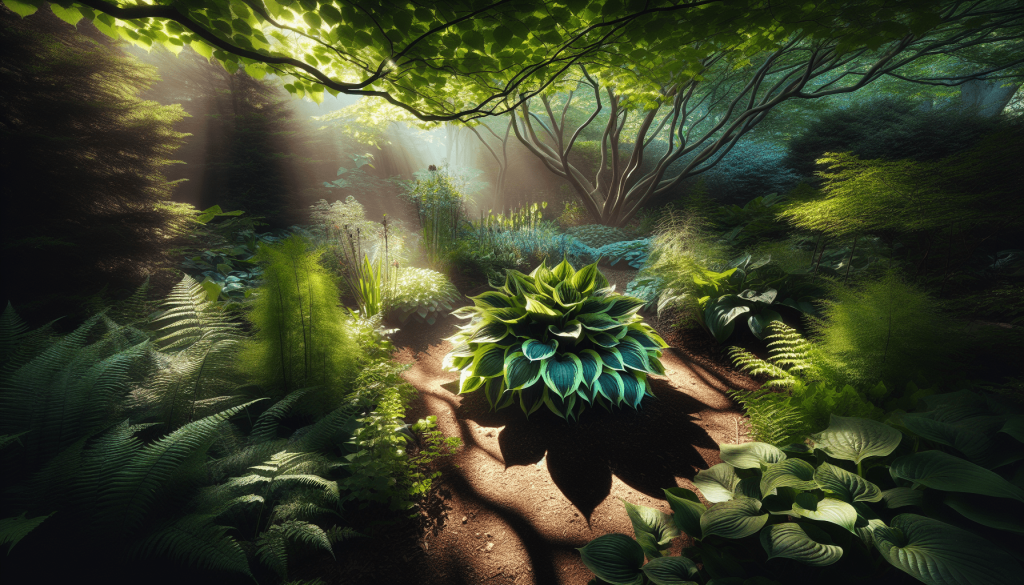
Fertilization: Feeding the Green Appetite
While shade-loving plants may seem like low-maintenance creatures, they still appreciate a hearty meal now and then. However, in the realm of fertilizers, more is not always merrier. It’s a delicate dance, much like seasoning a stew — just the right amount makes all the difference.
Choosing the Right Kind of Fertilizer
Consider a slow-release granular fertilizer for your leafy companions, offering a sustained nutrient buffet as they sip and graze over time. Organic options like compost tea can give a gentle boost, nurturing plants with love and a hint of vigor, without the harsh chemical kick. It’s almost like giving your garden a restful spa day.
Dealing with Pests: Intruders in the Covert
Even the quiet corners cloaked in shadows are not immune to garden nuisances. Snails, slugs, and other critters find partial shade as welcoming as a true oasis. But don’t let them dampen your green sanctuary’s serenity.
Tips for Maintaining Peace
Try natural pest control methods first. A sprinkle of crushed eggshells around plants can deter slugs, quite rude walkers on sharp paths. Introducing beneficial insects, like ladybugs, can help manage aphid populations, and keep things in balance naturally. Hand-picking pests might lack glamour, but it certainly gets the job done at times. Remember, balance is key — inviting too many natural predators might make your garden feel less like a refuge.
Creating Visual Interest: Setting the Stage
Though it may lack the drama of high noon sunlight, a garden in partial shade possesses its own brand of magic. With the right design, you can highlight these unique qualities, turning a plain patch into an enticing spectacle.
Layers and Textures
Creating contrast through layers can add depth and character. Consider plants with varying heights and textures, from the low-lying ground cover to towering accents, like the majestic false cypress. This layered approach gives an impression of fullness, enhancing the cozy verdant hug that a shaded garden can provide.
Pops of Color and Interest
While shade gardens might initially seem to lack the vibrant color associated with sunlight, they offer subtle hues and pops of pastel brilliance. Incorporate flowering plants such as bleeding hearts or foxgloves, offering bursts of color against that lush backdrop. Accent features, such as moss-covered stones or a small water feature, can also draw the eye and create focal points.
Maintenance: Ensuring Longevity
Creating a partial shade garden is only part of the journey; keeping it thriving and vibrant is an ongoing process. Regular care and attention are required, but the rewards, akin to a long-term flourishing friendship, are well worth the effort.
Pruning and Deadheading
Regular maintenance, like pruning and deadheading, can keep your garden looking its best. Removing spent blooms encourages continuous flowering, while trimming back leggy growth prevents sprawling chaos — quite the tidy art!
Monitoring and Adapting
Finally, always monitor how your garden evolves. Plants may need to be repositioned as other plants grow and create more or less shade. Stay flexible and responsive, ready to adapt to the ever-changing dynamic environment of your garden.
Celebrate the Success
Creating a garden that thrives in partial shade is a journey of discovery, observation, and joy. By embracing the characteristics unique to your shady sanctuary, you craft a space where nature can flourish with you as the gentle guide. Celebrate each bloom, each leaf cascade, knowing they’re a testament to your careful planning and consistent love. Like a fine art piece, your garden is forever evolving, forever yours to enjoy, and forever a place of peace and wonder.



